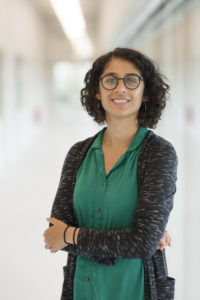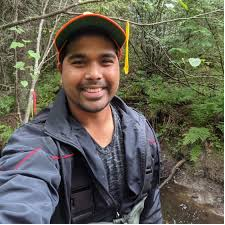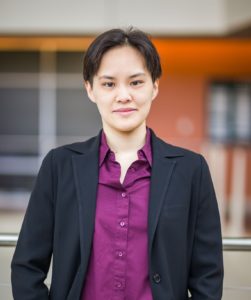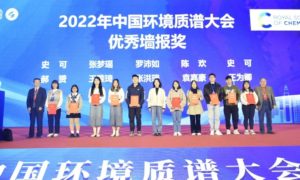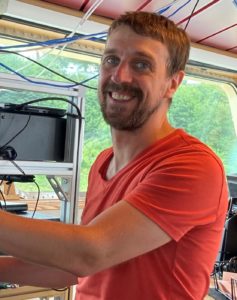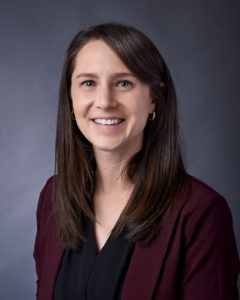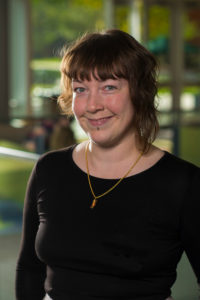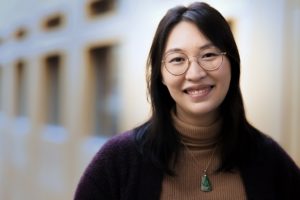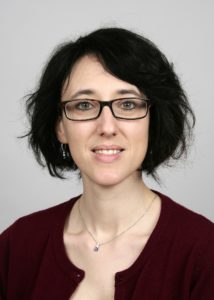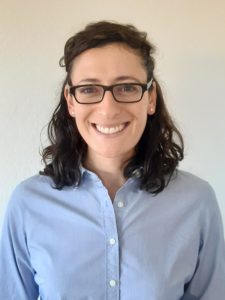 Laurel ThomasArrigo is a professor of Environmental Chemistry at the University of Neuchâtel. Prof ThomasArrigo’s research links a/biotic molecular- and micro-scale processes to physical changes at the catchment-scale to study biogeochemical cycling of nutrients and elements in the context of climate change. She combines advanced spectroscopic techniques and analytical chemistry with model laboratory and field-based studies. Prof ThomasArrigo holds a BSc in Mathematics and History from the University of Colorado (USA) and worked as an environmental consultant before obtaining her MSc in Hydrogeology at the University of Goettingen (Germany), and then PhD from ETH in Soil Chemistry in 2017. In 2023, Dr. ThomasArrigo joined the Institute of Chemistry at the University of Neuchâtel in Switzerland where she formed the Environmental Chemistry group.
Laurel ThomasArrigo is a professor of Environmental Chemistry at the University of Neuchâtel. Prof ThomasArrigo’s research links a/biotic molecular- and micro-scale processes to physical changes at the catchment-scale to study biogeochemical cycling of nutrients and elements in the context of climate change. She combines advanced spectroscopic techniques and analytical chemistry with model laboratory and field-based studies. Prof ThomasArrigo holds a BSc in Mathematics and History from the University of Colorado (USA) and worked as an environmental consultant before obtaining her MSc in Hydrogeology at the University of Goettingen (Germany), and then PhD from ETH in Soil Chemistry in 2017. In 2023, Dr. ThomasArrigo joined the Institute of Chemistry at the University of Neuchâtel in Switzerland where she formed the Environmental Chemistry group.
Read Laurel’s Emerging Investigator Series article “Coprecipitation with glucuronic acid limits reductive dissolution and transformation of ferrihydrite in an anoxic soil” and read more about her in the interview below:
Your recent Emerging Investigator Series paper focuses on the reductive dissolution and transformation of native Fe minerals in anoxic soil using stable iron isotopes. In fact you’ve published 5 other articles in our journal on ferrihydrite transformations in ESPI. How has your research evolved from your earliest work to this most recent article?
Ferrihydrite is a common iron mineral found in wetlands. It is often associated with trace elements like arsenic, which is what I initially studied during my PhD. Specifically, in places like wetlands, where the water-table fluctuates, transformation of ferrihydrite can lead to the release of sorbed arsenic. In these early studies, we also found that if organic carbon was present, it impacted the extent of ferrihydrite transformation. This finding sparked my interest in iron and carbon interactions. Over the years, I studied iron mineral transformations in both natural and synthetic samples and in field- as well as controlled lab-experiments. A continual challenge has been how to interpret and relate results across these different spatial and experimental scales. Which brings me to my most recent work. By using stable iron isotopes, we combine mechanistic information on mineral transformation with the complexity of working in a natural soil; a step towards bridging the gap between lab- and field-experimental results.
Laurel, I have to ask you how you write your name because I’ve seen it two different ways. Is it Laurel Thomas Arrigo or Laurel ThomasArrigo?
My last name is ThomasArrigo (no space).
What aspect of your work are you most excited about at the moment?
I’m really excited about combining lab- and field-based research. For example, one of my current projects explores the role of iron minerals for carbon cycling in Icelandic wetlands. In addition to field campaigns, where we have little control over environmental conditions, we conduct controlled experiments with the collected soils in the lab. Comparing the results helps us understand how various aspects of changing environmental conditions impact coupled element cycling in soils.
In your opinion, what are the most important questions to be asked/answered in this field of research?
One of the most important questions in environmental biogeochemistry is how nutrient and element cycles respond to changing environmental conditions. Soils play a big role in facilitating nutrient and element cycles, and there is a lot great work studying how soil components, including mineral phases, impact biogeochemical cycles. Still, there are many unanswered questions that currently limit our ability to accurately predict future element cycles; a key requisite to developing sustainable solutions to pressing environmental concerns.
What do you find most challenging about your research?
A challenge to many environmental science research questions is how to translate results across scales; both experimental scales; from simple to complex systems, but also spatial scales; from the lab to the field. Constantly trying to bridge this gap and explain field-scale phenomenon through mechanistic results obtained in lab studies can be trying, but it leads to diverse and exciting research with many unanswered questions.
In which upcoming conferences or events may our readers meet you?
I generally go to the Goldschmidt Conference, which is an international meeting on geochemistry jointly administered by the Geochemical Society and the European Association of Geochemistry but haven’t planned the rest of 2025 yet.
How do you spend your spare time?
I go to the mountains as often as I can. Climbing, hiking, skiing, or mountain biking; really anything that gets me outside and moving.
Which profession would you choose if you were not a scientist?
I always enjoyed sports and have great respect for physical therapists who kept me active after various injuries. So, sports therapy would be an interesting career!
Can you share one piece of career-related advice or wisdom with other early career scientists?
Start building a network, both of peers and mentors. Peers create a great support system to get through challenging times and may turn into colleagues or collaborators in the future. Mentors can offer advice, open doors, and facilitate further introductions. Invest time to attend conferences and scientific talks and keep in touch with the contacts you make.











